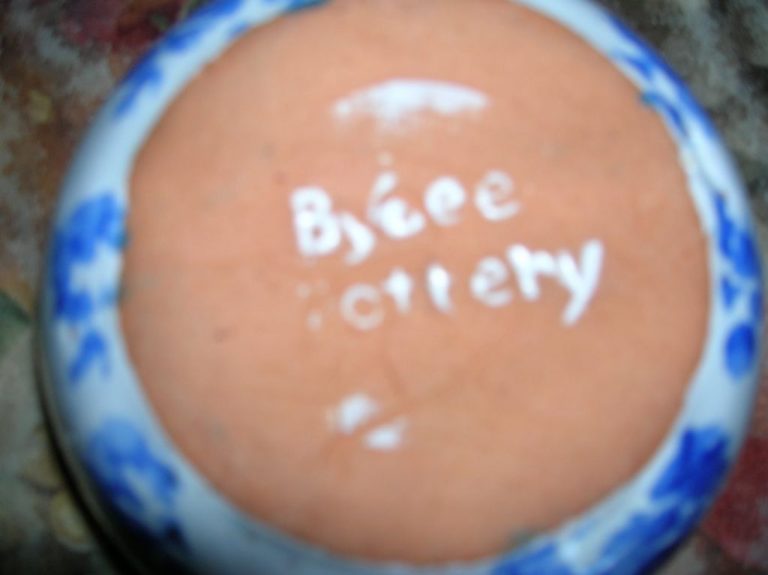Can You Drink Coffee From A Clay Cup?
Coffee is an ancient beverage that has evolved through many forms and customs over the past 1,000 years. One tradition that has endured is drinking coffee from earthenware cups made of natural clay. These rustic vessels provide a sensory experience that connects us to past generations of coffee drinkers.
Clay cups have seen resurgence in popularity as consumers increasingly seek to reduce waste from single-use paper and plastic coffee cups. Reusable clay cups appeal as an eco-friendly, natural material option. But are they safe? Can substances from the clay leach into the coffee?
In this article, we’ll explore the benefits and potential concerns of drinking coffee from clay cups. We’ll also provide tips on choosing quality clay cups and properly caring for them.
Background on Clay Cups
Clay cups have been used for thousands of years, dating back to ancient civilizations. The earliest known clay vessels were made in China around 20,000 BC, and pottery was independently invented in many places around the world, including Japan, ancient Greece and Rome, and Mesopotamia (Clay and Pottery Brief History). Over time, clay cups evolved from basic earthenware to more refined porcelain and stoneware.
Clay cups are made from clay, water, and often mineral and organic additives. The different types of clay used include earthenware, stoneware, and porcelain. Earthenware is made from clay containing iron and other minerals and is fired at lower temperatures. Stoneware contains minerals that enable firing at higher temperatures, creating a stronger material. Porcelain clay is the purest with high levels of kaolinite, resulting in a translucent white material when fired at very high temperatures (Ceramic Cups Through History: A Journey of Culture and …).
The manufacturing process starts with preparing the clay, which is wedged or mixed to achieve an even moisture consistency. The clay is shaped using techniques like throwing on a potter’s wheel, slipcasting into molds, or handbuilding. After drying and smoothing, the clay pieces go through a bisque firing at lower temperatures. A glaze made of minerals and metal oxides is applied before a final high temperature firing to vitrify and create a non-porous ceramic material.
Benefits of Clay Cups
Clay cups provide several advantages over cups made of other materials like plastic or glass. Being made from natural clay, they are eco-friendly and sustainable. Clay is an abundant, natural material that does not require extensive processing or chemicals to produce into cups (https://www.terrawaterindonesia.com/post/drinking-water-from-a-clay-pot-is-it-healthy-or-outdated).
The porous nature of clay allows air to pass through the material, keeping coffee hotter for longer compared to impermeable materials like glass or plastic. The clay does not retain flavors or odors either, so it will not impact the taste of the coffee (https://mitticool.com/6-wonderful-benefits-of-drinking-water-from-clay-bottle/). Unlike some containers, clay cups add no extra flavors or chemicals to alter the original taste of the coffee.
Overall, clay cups provide a natural, eco-friendly option to enjoy coffee while keeping it hotter for longer without impacting the flavor.
Downsides of Clay Cups
While clay cups have many benefits, they do come with some potential downsides to be aware of. One of the main downsides is that clay can break more easily than materials like glass or plastic [1]. Clay is porous and delicate, so clay cups may chip or crack if dropped or handled roughly. Another downside is that clay cups require a bit more care than regular mugs [2]. Clay is prone to staining from teas, coffee, and other liquids. The porous nature means odors and bacteria can get trapped in the clay if not washed properly. Clay cups should be handwashed and fully dried to prevent damage and buildup. Finally, clay cups tend to be heavier than standard ceramic mugs due to the dense nature of clay. This can make them a bit cumbersome for some users.
Overall, clay cups are more prone to breaking, require special care, and tend to be heavy. However, many feel the natural benefits of clay outweigh these minor inconveniences.
[1] https://newbasics.in/2021/11/26/advantages-and-disadvantages-of-using-clayware-earthenware-terracotta/
[2] https://ireadlabelsforyou.com/clay-cookware-safe-or-toxic/
Coffee Chemistry
Clay is an extremely porous material which makes it ideal for accentuating the flavor notes in coffee. The porosity allows the natural oils and flavors to be absorbed into the clay, so you get a richer, fuller tasting coffee.
Studies have shown that the natural earthiness of clay cups enhances the acidity and brightness in light roast coffees like Ethiopian Yirgacheffe. The porous walls extract more organic acids like citric acid which accentuate the fruity flavors (Source).

Clay is also non-reactive unlike metals which can give coffee a metallic taste. The inert nature allows the true flavors to shine through unadulterated. This is especially noticeable when drinking lighter roasts which have delicate flavor profiles.
Overall, clay’s porosity and neutral canvas allow the complex chemistry of coffee to be fully experienced. If you want to appreciate the subtle notes and acids, ditch the to-go cup and drink your morning brew from an artisanal clay mug.
Lead Content Concerns
Lead exposure from drinking out of clay cups or ceramic mugs is a valid concern. Lead can leach into beverages from the glaze or paint used on cups and mugs, especially those made before regulations were enacted. According to the FDA, lead is toxic if consumed even in small amounts, and can cause health issues like developmental problems in children and high blood pressure in adults.
In the 1970s, regulations were passed in the United States that set limits on lead levels allowed in dishware. Any clay or ceramic mug made after these regulations should be lead-free and safe to drink from. Older vintage mugs may still contain higher lead levels, so should be tested before regular use. There are lead testing kits available to consumers that can detect if concerning levels of lead are present.
When shopping for new clay or ceramic cups and mugs, look for ones marked “lead-free.” Reputable manufacturers will follow compliance standards and label lead-free dishware appropriately. Handmade or homemade clay and ceramic ware should be tested, since lead exposure risks are higher without regulated manufacturing.
Proper testing and using only lead-free, regulated dishware are the best ways to avoid lead exposure from clay cups and ceramic mugs. While vintage, handmade, or international ware may look appealing, err on the side of caution if lead content is uncertain.
Care and Use Tips
Clay cups require a bit more care than standard ceramic mugs. Here are some tips for proper use and care of clay cups:
Handwashing is recommended. Clay is porous, so dishwasher detergents can soak into the material over time and cause staining or flavor impacts. For best results, handwash clay cups soon after use with warm soapy water.
Clay cups are not microwave safe. The porous material can absorb moisture which can lead to cracking or even explosion. Always heat contents in a separate container.
Avoid metal utensils. Clay is a soft material that can easily be scratched by metal utensils or straws. Use wood or plastic utensils instead.
Store clay cups with care. Do not stack tightly, as humidity retention in a closed stack can breed bacteria or mold. Let clay cups fully air dry before storage.
Clay vs. Ceramic
Clay and ceramic are often used interchangeably, but they have distinct technical differences. Ceramics are predominantly made from clay that has been fired at high temperatures, making the material non-porous and often given a decorative glaze or finish. In contrast, clay cups and mugs are often unglazed and maintain some porosity even after firing.
The porosity of clay allows air bubbles to form within the material which affects its ability to retain heat. While ceramic mugs with their non-porous body tend to maintain temperature longer, the porosity of clay allows the material to insulate against heat transfer. This means a piping hot coffee may cool down quicker in a ceramic mug versus a clay mug.
The slightly porous nature of clay also allows subtle interaction between the clay body and the coffee, with some absorption of coffee oils into the clay. This is unlike an impervious ceramic glaze that provides an inert barrier between the beverage and mug material. Some enthusiasts claim the porous clay enhances flavor, while detractors point out a slight loss of oils that may compromise taste.
Popular Clay Cup Brands
Some top clay cup brands include:
- Minetti Design Ceramics (https://ashateahouse.com/products/wild-clay-tea-cup-traditional) – Handmade in the USA, these clay cups feature beautiful glazes in earthy tones. They are durable yet have an artisanal look and feel.
- Bennington Potters (https://www.amazon.com/Clay-Cup/s?k=Clay+Cup) – Founded in 1948, Bennington offers simple, functional clay cups at affordable prices. Their cups showcase clean, modern designs.
- Lehman’s (https://www.lehmans.com/search?w=clay%20cups) – Specializing in old-fashioned kitchenware, Lehman’s clay cups have a nostalgic farmhouse aesthetic. They are lead-free and safe for daily use.
The benefits of handmade clay cups are their uniqueness, artisanal craftsmanship, and natural materials. However, they can be more fragile than commercial ceramic ware. Mass-produced clay cups are inexpensive and durable for daily use, but lack the artisanal quality of handmade versions.
Conclusion
In summary, clay cups can absolutely be used for drinking coffee but do come with some precautions. The natural porousness of clay allows subtle interactions between the clay and coffee that can enhance flavor. However, the lead content in some clay must be considered, especially for cups produced outside the US. With care taken to find lead-free clay and to “season” the cups properly before use, clay cups make an excellent vessel for enjoying coffee’s nuances. At the end of the day, ceramic and clay both have their merits for coffee drinkers. As with most things, moderation and smart choices are key to harnessing the benefits of clay while minimizing the risks.
When chosen wisely and handled with care, clay cups can be a safe, sustainable, and uniquely flavorful way to enjoy your daily cup of coffee. Just be sure to do research before purchasing clay cups, particularly from unknown makers, to ensure your morning brew remains a satisfying and healthy ritual.



